Persistent sodium currents in SCN1A developmental and degenerative epileptic dyskinetic encephalopathy
- PMID: 34755109
- PMCID: PMC8568850
- DOI: 10.1093/braincomms/fcab235
Persistent sodium currents in SCN1A developmental and degenerative epileptic dyskinetic encephalopathy
Abstract
Pathogenic variants in the voltage-gated sodium channel gene (SCN1A) are amongst the most common genetic causes of childhood epilepsies. There is considerable heterogeneity in both the types of causative variants and associated phenotypes; a recent expansion of the phenotypic spectrum of SCN1A associated epilepsies now includes an early onset severe developmental and epileptic encephalopathy with regression and a hyperkinetic movement disorder. Herein, we report a female with a developmental and degenerative epileptic-dyskinetic encephalopathy, distinct and more severe than classic Dravet syndrome. Clinical diagnostics indicated a paternally inherited c.5053G>T; p. A1685S variant of uncertain significance in SCN1A. Whole-exome sequencing detected a second de novo mosaic (18%) c.2345G>A; p. T782I likely pathogenic variant in SCN1A (maternal allele). Biophysical characterization of both mutant channels in a heterologous expression system identified gain-of-function effects in both, with a milder shift in fast inactivation of the p. A1685S channels; and a more severe persistent sodium current in the p. T782I. Using computational models, we show that large persistent sodium currents induce hyper-excitability in individual cortical neurons, thus relating the severe phenotype to the empirically quantified sodium channel dysfunction. These findings further broaden the phenotypic spectrum of SCN1A associated epilepsies and highlight the importance of testing for mosaicism in epileptic encephalopathies. Detailed biophysical evaluation and computational modelling further highlight the role of gain-of-function variants in the pathophysiology of the most severe phenotypes associated with SCN1A.
Keywords: Hodgkin–Huxley model; SCN1A; epileptic encephalopathy; non-inactivating current; sodium-channel gating.
© The Author(s) (2021). Published by Oxford University Press on behalf of the Guarantors of Brain.
Figures

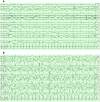
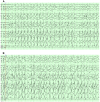
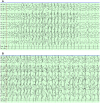
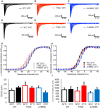


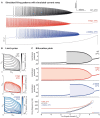
References
-
- Covanis A. Epileptic encephalopathies (including severe epilepsy syndromes). Epilepsia. 2012;53 (Suppl 4):114–126. - PubMed
-
- McTague A, Howell KB, Cross JH, Kurian MA, Scheffer IE.. The genetic landscape of the epileptic encephalopathies of infancy and childhood. Lancet Neurol. 2016;15(3):304–316. - PubMed
-
- Absoud M, Parr JR, Halliday D, Pretorius P, Zaiwalla Z, Jayawant S.. A novel ARX phenotype: Rapid neurodegeneration with Ohtahara syndrome and a dyskinetic movement disorder. Dev Med Child Neurol. 2010;52(3):305–307. - PubMed
Grants and funding
LinkOut - more resources
Full Text Sources
